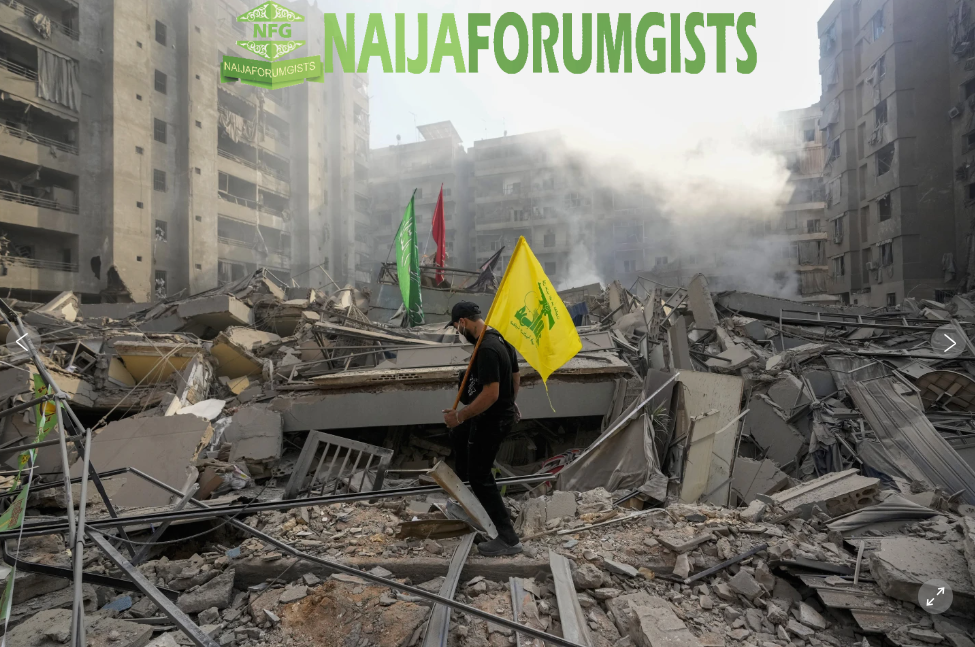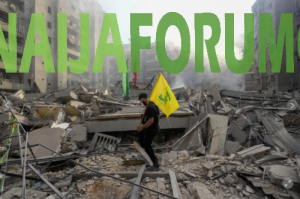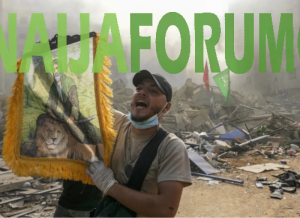Israel bombs Gaza and Lebanon, killing dozens in new airstrikes.



The Lebanese Health Ministry reported that Israel carried out dozens of intense airstrikes across the northeastern farming villages of Lebanon on Friday, killing at least 52 people and injuring scores more.
According to hospital officials, Palestinians in central Gaza recovered the bodies of 25 people who were killed in a barrage of Israeli aerial attacks that began on Thursday.
The most recent violence occurs in the midst of a renewed diplomatic effort by the administration of US President Joe Biden to reach temporary cease-fire agreements just days before the presidential election.
Seven people were injured in an attack in the central town of Tira, according to Israel’s emergency services, before dawn on Saturday. According to Israel’s military, three projectiles entered the country from Lebanon and were intercepted.
According to the Magen David Adom service, two of the injured were in moderate condition following the attack, while the remaining injuries were less severe. The service released a picture that appeared to show damage to an apartment building.


Israel has intensified its assault on the remaining Hamas fighters in Gaza, destroying parts of the north and raising concerns that the humanitarian situation for the remaining civilians will get worse.
After initially targeting smaller border villages in the south, where Hezbollah operates, Israel has expanded its strikes in Lebanon in recent weeks to larger urban centers like the 80,000-person town of Baalbek.
Hezbollah, backed by Iran, is a major political party and social service provider in Lebanon.
In support of Hamas, Hezbollah began launching missiles, drones, and rockets into Israel from Lebanon immediately following the Hamas-led attack on Israel on Oct. 7, 2023, which sparked the war in Gaza. On October 1, Israeli forces launched a ground invasion of southern Lebanon for the first time since 2006. This marked the culmination of the year-long cross-border fighting into a full-blown war.
Israel carried out a series of heavy airstrikes on Friday in Lebanon’s Bekaa Valley, killing at least 52 people, forcing additional families to flee with whatever they could carry and sending thick smoke over the horizon. Until recently, small villages, olive groves, and wineries nestled between the country’s mountain ranges had largely been spared the worst of Israeli bombardment.


According to Hussein Haj Hassan, a Lebanese lawmaker who represents the region, intensified Israeli airstrikes on and around the northeastern city of Baalbek after Israel issued evacuation warnings have prompted 60,000 people to flee, emptying nearby villages.
After airstrikes in the town of Younine in Lebanon killed nine people and destroyed a building that had housed twenty people, rescue workers searched for survivors. The Health Ministry reported that additional Israeli strikes resulted in the deaths of 12 people in the town of Amhaz and 31 others in at least a dozen villages in the northeast of Lebanon, bringing the total number of dead to 52. The ministry added that 72 people were injured in the bombardment.
Israel did not immediately provide a response regarding the fatal strikes.
After a brief respite, Israeli aircraft pounded the southern suburb of Dahiyeh in Lebanon’s capital for the first time in four days, causing panic. According to the Israeli military, it struck Hezbollah command centers and weapons manufacturing facilities after warning residents to leave at least nine locations in Dahiyeh.
There were no casualties reported from Dahiyeh, where residents flee in large numbers each night due to concerns about Israeli bombings.
Friday, bulldozers tore through smoke and dust to remove the debris from the shattered roads where Israeli warplanes had destroyed dozens of buildings.
Mid-rise apartment blocks that had been home to families and businesses were left open to the wind, their walls were torn down, and furniture was buried. The bright yellow banner of Hezbollah was hoisted atop the debris in several locations.
The Health Ministry reports that more than 2,897 people have been killed and 13,150 have been wounded in Lebanon since the conflict between Israel and Hezbollah erupted in 2023, excluding Friday’s rising death toll. Women and children accounted for a quarter of the deaths, according to health authorities.

Israel’s ground invasion and bombardment of Lebanon have, according to UN agencies, resulted in the displacement of 1.4 million people. Over the course of more than a year, approximately 60,000 people who live in Israel’s northern communities near Lebanon have also been forced to flee.
Hezbollah has continued to launch rockets into northern Israel. On Thursday, projectiles launched from Lebanon struck agricultural areas, resulting in the deaths of seven people, including four Thai farm workers.
On Friday, health officials at the Al-Aqsa Martyrs Hospital reported that a barrage of airstrikes hit the Nuseirat refugee camp in the center of Gaza, killing at least 21 Palestinians, including an 18-month-old and his 10-year-old sister.
According to hospital officials, Israeli strikes also struck a motorcycle in Zuwaida and a house in Deir al-Balah, killing four more people. This brings the total number of people killed in Gaza on Friday to 25.
Israel didn’t say anything about the strikes outside the Nuseirat refugee camp, but it said it hit Hamas infrastructure and a militant near the camp. It stated that it was looking into reports of civilian casualties and was aware of them. Izz al-Din Kassab, a senior member of the Hamas political bureau, and his assistant, Ayman Ayesh, were killed in an airstrike on a vehicle in the southern Gaza town of Khan Younis, the army stated in a separate announcement.
Kassab’s death was confirmed by Hamas, which was not widely reported. Israel claimed that he coordinated between Gaza’s militant groups.
After a flurry of meetings with Israeli officials, American diplomats left the region without a cease-fire agreement in either Gaza or Lebanon.
Hamas reiterated its long-standing demands for a permanent cease-fire and an unconditional Israeli withdrawal from Gaza on Friday, claiming that Israel only provided a brief truce and an increase in aid deliveries during the most recent negotiations. Israel did not immediately respond with a response.
Senior Hamas official Bassem Naem said, “The proposals do not meet the comprehensive needs of the Palestinian people in terms of security, stability, relief, and reconstruction.” He first said this to Al Aqsa TV, which is run by Hamas, before stating the group’s position to The Associated Press.
Since Oct. 7, 2023, when Hamas militants killed roughly 1,200 people in Israel and took 250 hostages back to Gaza, Israel’s brutal war in Gaza has killed more than 43,000 Palestinians.
Health officials in Gaza controlled by Hamas do not distinguish between civilians and combatants, but they do say that women and children account for more than half of the deaths there.
Recently, Israeli forces have turned their attention to Hamas militants, who, according to them, have regrouped in northern Gaza and are renewing an offensive that has trapped tens of thousands of people without enough food or water and under intense bombardment.
The World Health Organization has announced that it will finally resume an emergency polio vaccination campaign on Saturday, but only in Gaza City. Israeli airstrikes have repeatedly hampered the effort. As Israel tightens its siege, towns further north, like Jabaliya, Beit Lahiya, and Beit Hanoun, remain inaccessible.
The United Nations and a number of other humanitarian organizations issued a warning on Friday that “the situation unfolding in north Gaza is apocalyptic.” They cited Israel’s refusal to provide the region with humanitarian aid, military raids on hospitals, airstrikes on shelters, and obstruction of Palestinian rescue teams attempting to assist victims of Israeli attacks.
Shurafa reported from the Gaza Strip’s Deir al-Balah. Julia Frankel, an Associated Press reporter in Jerusalem; Beirut’s Bassem Mroue; David in Bangkok rising; In Buenos Aires, Argentina, Isabel DeBre; In New York, Edith Lederer; and Jamey Keaten, who was in Geneva, helped with this report.






